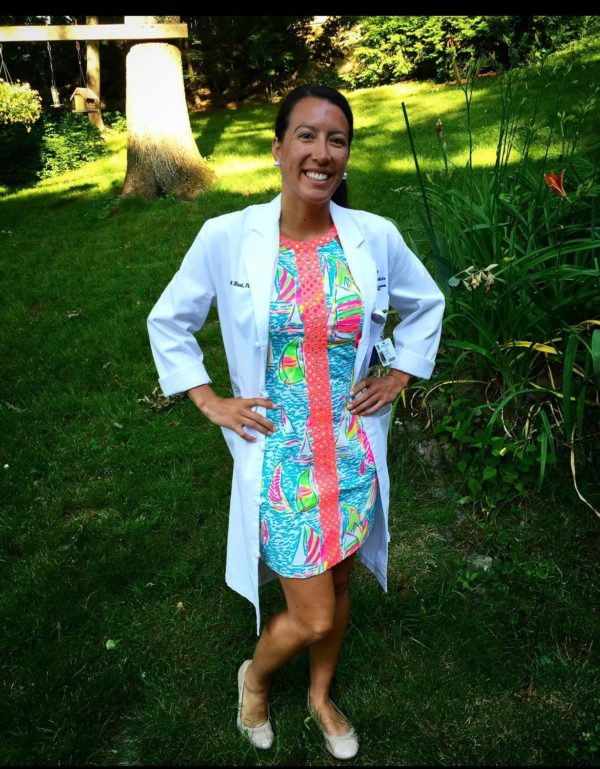
Gymnastics Medicine Founder Dr. Elly Hart with some top tips on staying healthy this season.
1. What are your qualifications as a medical professional?
Dr. Hart: I’m a certified physician assistant and certified athletic trainer as well as in 2019, I obtained my doctorate degree. I’m also the founder of the country’s first and only gymnastics-specific sports medicine clinic, Gymnastics Medicine (at Boston Children’s Hospital), which provides gymnasts, gymnastics-specific diagnoses, same-day x-rays, and MRIs as needed, treatment plans, and return-to-gymnastics assessments/plans which help guide a gymnast back to the sport after injury. I’m also the founder of the non-profit Gymnastics Medicine: Education and Research.
While my medical career has been focused on gymnastics, the sport also played a big role in my athletic career as well. I graduated from James Madison University, where I competed as a Division 1 gymnast. After graduating, I started working as a Certified Athletic Trainer and competing again. At age twenty-three, I became the oldest Level 10 gymnast to complete four for four routines at the Junior Olympic National Championships.
2. What are some of the most common types of injuries you see in gymnasts?
Dr. Hart: Many research and medical studies state that the top injuries in gymnastics are ankle and knee injuries. However, in my Gymnastics Medicine Clinic at Boston Children’s Hospital, the most common injuries I see are:
- Gymnast wrist”: an overuse wrist injury to the growth plate.
- Elbow osteochondritis dissecans: an overuse injury to the elbow cartilage.
- Back pain: either from a spondylolysis, a stress fracture or fracture to the spine from overuse, or “gymnast back,” an overuse injury from muscle strength and flexibility imbalances.
3. What precautions should gymnasts who were injured last season take now to help ease them back into competing without further injury?
Dr. Hart: The best thing gymnasts can do is sleep eight to ten hours a night, eat various foods, and ensure they’re eating enough. This may mean working with a sports nutritionist to ensure that the gymnast gets the proper nutrition they need. Second, gymnasts should also drink plenty of water throughout the day and at gymnastics practice. Third, they should also check their mental health by asking themselves what they enjoy about gymnastics and their goals for the season. Last, gymnasts should also regularly check in on how their body is feeling. It’s crucial not to ignore pain, have a good warm-up and injury prevention pre-hab exercise plan, and make sure a medical team is ready to help and assist when needed!
4. Are there any injuries that are more prevalent at the beginning of the season?
Dr. Hart: Typically, after summer training and at the end of the season, there are a lot of overuse injuries because gymnasts have increased their hours during these times. I advise always checking in with your gymnast to see how their body is feeling! After all, it’s easier to treat an injury that has been ongoing for two to four weeks than two to four months.
5. What are Gymnastics Medicine’s goals for the 2022-2023 season?
Dr. Hart: We hope to continue to grow, expand, and spread knowledge on gymnastics injuries and prevention and are working towards having more attendance at our virtual and in-person lectures as we continue to reach more gymnasts. We are also developing a men’s branch of Gymnastics Medicine, as well as starting a student branch of the organization to engage students who might be interested in having a career in medicine and talk to other gymnasts who have also had injuries. Sign up for our email list to learn more!
Original blog post with Plum Practicewear can be found here: PlumPracticewearBlog